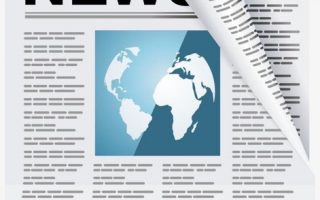The following methods can be used for the etching of printed circuit boards:
1) Immersion etching;
2) Bubble etching;
3) Splash etching;
4) Spray etching.
Due to the high yield and fine grain resolution of spray etching, it is the most widely used technology.
1 Immersion etching
Immersion etching is a half-paddle technique. It only needs a tank filled with etching solution, and the entire board is immersed in the solution, as shown in Figure 1. The board needs to be kept immersed until the etching is completed, which requires a long etching time and the etching speed is very slow. The etching speed can be increased by heating the etching solution. This method is suitable for small boards or prototype boards. The immersion etching usually uses sulfuric acid to which persulfuric acid plating or hydrogen peroxide is added as an etchant.
2 Bubble etching
This technology has made some modifications to the immersion etching technology, the difference is that the gas in the air enters the etching solution. The gas plays two roles when passing through the solution:
1) Ensure that there is continuous fresh etchant on the surface to wash away the dissolved metal;
2) Improve the oxidation ability and regenerate the etchant.
The etching speed depends on the air pressure. When it reaches a certain level (air pressure usually reaches 2Pa), the etching quality will be very high. This etching method uses sulfuric acid brocade and persulfuric acid plating as an etchant. The main disadvantage of bubble etching is that when hydrogen peroxide and sulfuric acid are used as etchant, a large amount of corrosive fumes will be generated. If bubble etching is used, the smoke must be effectively collected and purified.
3 Splash etching
The principle of splash etching is to connect a blade or cup to the shaft of a motor. When the motor rotates, the etchant is sprayed onto the board to be etched under the action of centrifugal force. In other words, the contact between the board and the solution depends on the rotation of the shaft. The blade design is shown in Figure 3. Splash etching or blade etching is better than bubble etching because it etches uniformly and side etching is small, but only a limited number of boards can be etched at a time. This etching method usually uses ferric chloride and banyan sulphate solution as etchant. A large-capacity container is used at the bottom of the tank to reduce the replacement of the solution. This technique has a slower etching speed than automatic spray etching, so it is rarely used now.
4 Spray etching
The simplest form of spray etching is a box with a groove underneath it. Under pressure, the etching solution is pumped evenly from the tank through a nozzle and sprayed on the surface of the board. It sprays fresh solution on the board and has a high etching rate. The following factors determine the uniformity of etching:
1) The consistency of spraying style, power, spraying volume and discharge location;
2) The chemical properties of the etchant, the pressure of the pump, the shape and placement of the nozzle, these conditions determine the etching speed;
3) If it is a double panel, spray on both sides.
In the closed loop regeneration system, the board should be etched continuously. The etching rate of this system is high, while side etching is small, and the resolution of fine lines is good. In this technology, an oxidizing plating etchant is often used to etch the double-sided plated through-hole plate, and the system equipment should be made of acid-resistant or alkali-resistant materials, such as PVC. However, if it is a system that uses sulfuric acid/hydrogen peroxide as the etchant, it needs to be made of stainless steel, polycarbonate or polypropylene. There are two types of spray etching techniques, they are:
1) Horizontal spraying: This technology has two rows of independently controlled nozzles on the top and bottom. Double-sided horizontal etching is usually mainly used to produce double-sided panels.
2) Vertical spraying: In this technique, etching is done by placing the board on a shelf so that the board can be lowered to the area of the spray box. With a large amount, the nozzle moves up and down or left and right to perform etching to achieve the desired result.
The spray etching machine can be used for vertical or horizontal etching in a fully automatic or semi-automatic manner. This automated etching includes pressure control, heating, specific gravity indicator and solution regeneration. The automatic equipment is designed to increase production speed. The board is placed on the shelf. When passing through the etching chamber, a row of nozzles swings to spray and etch the board on one or both sides. The shelf needs to be rinsed and neutralized with water. The pressure of each row of nozzles is easy to control.
It has been proven that the rotary etching machine is very effective for the production of printed circuit board prototypes or small quantities of printed circuit boards. In this equipment, the etching solution is placed at the bottom of the tank, which uses quartz heating, which can be electronically controlled to shorten the heating time and keep the temperature constant. This equipment can handle (300 x 500) mm boards. In the production of printed circuit boards, the shelf where the boards are placed before the second etching cycle can be rotated by 180°. In addition, a scrubbing tank is provided to rinse the etched boards. The resolution of the electrode traces etched by this equipment can reach less than 0.1mm, and the etching speed can only reach 90s in the new FeCI3 etching solution.
